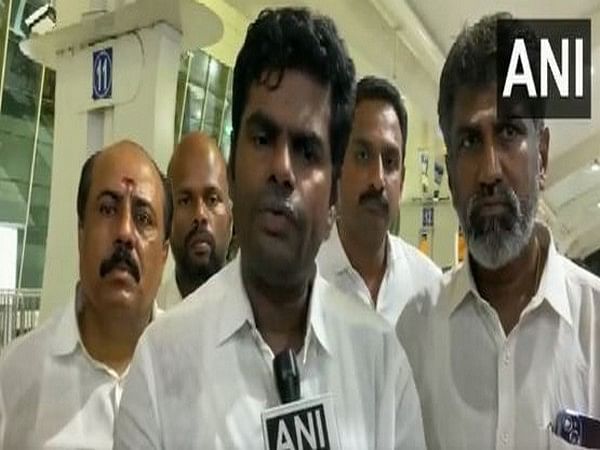Chennai (Tamil Nadu) [India], May 27 (ANI): Hitting out at Congress over the ‘Sengol’ issue, Tamil Nadu Bharatiya Janata Party (BJP) chief K Annamalai on Friday said why it was marked as a “walking stick” in the museum.
“The Adheenam has spoken in the true spirit of what exactly happened in 1947. Congress has to clarify why Sengol was marked as a walking stick in the museum,” Annamalai told ANI.
Demanding an apology from Congress, he said, “They must apologise to the Tamil Nadu people for disrespecting the Sanatana Dharma rather than getting into why Lord Mountbatten’s picture was not there. This is taking politics to a stupid level.”
The historic sceptre ‘Sengol’ was received by Pandit Jawaharlal Nehru on August 14, 1947, to represent the symbol of the transfer of power from the Britishers to India.
The same spectre will be handed over to Prime Minister Narendra Modi by the head priest of Madurai Adheenam on May 28.
Prime Minister Narendra Modi took a decision to adopt the Sengol as a national symbol of the Amrit Kaal. The new building of Parliament will witness the very same event, with Adheenam (Priests) repeating the ceremony and vesting the PM with the Sengol.
The same Sengol from 1947 will be installed by the Prime Minister in the Lok Sabha, prominently close to the Speaker’s podium. It will be displayed for the Nation to see and will be taken out on special occasions.
Prime Minister Narendra Modi and Lok Sabha Speaker Om Birla are slated to dedicate to the nation the new Parliament building on May 28.
The establishment of “Sengol”, makes the spirit of 15 August 1947 unforgettable. It is the symbol of the promise of boundless hope, boundless possibilities and a resolve to build a strong and prosperous nation.
The word Sengol is derived from the Tamil word ‘Semmai’, meaning ‘Righteousness’. It is an Indic civilizational practice from the Chola kingdom, which was among the leading kingdoms in the Indian sub-continent for centuries. (ANI)
This report is auto-generated from ANI news service. ThePrint holds no responsibility for its content.




